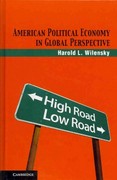Suppose the cross-price elasticity between alcohol and cigarettes is -0.30.What will happen to the consumption of cigarettes if the price of alcohol increases by 50
percent?
Is Washington Square Park a non-excludable public good? Explain.
(5 points) Last year, Acme signed a four year leasing contract for a new retail store for
$2M total. At that time, the forecast for revenues minus operating costs was $4M over
the four years. Based on that forecast, Acme has now already undertaken $1.5M of
renovation.
Recent updated forecasts suggest that revenues minus operating costs will actually be
$2.5M over the four years, and that Acme would need to undertake an additional $1M in
renovation in order to open the store. Given this new information, should Acme continue
with its decision to open this store? Explain your reasoning.
(5 points) An insurance company sells medical insurance for dogs, charging dog owners a
premium of $10 per month so long as they enroll their dog within the first two months of
ownership. If they begin enrollment after two months, their insurance premiums rise by
$1 for each month that enrollment is delayed. So, a delay of 12 months raises the
monthly premium to $22. Explain why the insurance company has this pricing structure.
(9 points) Yorkton Life is seeking to increase the excess spread earned in its Group Pension product line without increasing its current level of risk. Yorkton plans to do this by expanding the asset universe backing the product to include equity, asset-backed securities (ABS) and high yield bonds. The investment team performs a bottom-up strategic asset allocation (SAA) analysis incorporating the expanded asset universe. Their bottom-up SAA analysis, Approach 1, minimizes the asset portfolio volatility for a given level of net excess yield. The net excess yield is defined as the portfolio asset yield less the average Group Pension liability pricing rate. Their analysis produces an efficient frontier of portfolios A through H. They are plotted along with the current portfolio in Chart 1. Chart 1 2.00% H 1.75% G 1.50% F 1.25% E 1.00% Net Excess Yield D 0.7596 C 0.50% B Current Portfolio 0.25% 0.00% -0.25% 4.0%% 4.5% 5.0% 5.5% 6.015 6.5 Asset Volatility -0-Approach 1 Efficient Frontier (a) (/ point) Explain why the Approach I Efficient Frontier is above and to the left of the current portfolio. You have been asked to recommend a new efficient portfolio asset mix that is compliant with Yorkton's risk management constraints, You decide to perform another SAA analysis on a holistic basis - Approach 2. (b) (/ point) Contrast the "bottom-up" approach used by the investment team in their SAA analysis to your holistic approachTo bring the liabilities into your SAA analysis, you have determined the following key rate duration profile of the Group Pension liabilities: Term (Years) 3 5 10 30 Duration 0.2 0.6 1.5 4.0 1.5 (c) (2 points) Construct a portfolio of zero coupon bonds that will replicate a $100 million Group Pension liability. Show your work. Your Approach 2 SAA analysis produces another efficient frontier, consisting of portfolios I through VIII that minimize surplus volatility for a given level of net excess yield. You also calculate the surplus volatility for each of the Approach 1 portfolios A through H. You plot these results alongside your Approach 2 efficient frontier and the current portfolio in Chart 2. Chart 2 20OK VIII 1 75% H 1 501 VII G 1 25% F 1 0OK E Not Excess Yield IV Current C Portto o E -0 25% 1.OK 15% 2.5% 30% 4.OK 45% 5.5% Surplus Volatility -AApproach 2 Efficient Frontier Approach 1 Portfolios(d) (2 points) Sketch approximately where you would expect the Approach 2 portfolios to fall on Chart 1 provided at the beginning of the question. Explain your sketch. (c) (/.5 points) Recommend a new efficient portfolio to Yorkton management for each of (i) and (ii): (i) Approach 1 Efficient Frontier, portfolios A through H (ii) Approach 2 Efficient Frontier, portfolios I through VIII Justify your recommendations. (f) (1.5 points) Indicate how likely it is that each of Approaches I and 2 will meet risk management goals with respect to: (i) Portfolio Risk (ii) Surplus Risk (iii) Economic Capital Requirement (iv) Market Risk Diversification(9 points) You are employed by a firm that is currently evaluating a potential investment in a windmill farm. You are concerned with the exposure this investment has to natural disasters. You determine that the natural disasters that would completely ruin the windmill farm have occurred two times in the past 160 years. While the firm typically accounts for risk implicitly when determining its hurdle rate for a project, you decide to model the frequency of natural disasters as a Poisson process. You are given the Poisson distribution: P(Nin)=n)= (Any The cash flows and metrics relating to this investment are as follows: Year (r) Cash Flow (500) LAWN- 1.650 IRR 26.97% Hurdle Rate 25.00% (a) (2 points) (i) Demonstrate that the Maximum Likelihood Estimator (MLE) for the A parameter of the Poisson distribution is equal to the sample mean. (ii) Calculate the MLE for the 4 parameter relating to natural disasters.(b) (3 points) You have confirmed that the risk premium assumed in the hurdle rate did not explicitly consider the risk of natural disaster. (i) Assess whether the potential for natural disaster alters the decision on whether to accept this investment. Show your work. () Identify the shortcomings of using a Poisson approach for modeling the risk of natural disaster for this investment. A colleague recognizes the similarity between your proposed adjustment for the risk of ruin related to natural disaster and the estimation of default risk relating to fixed income securities. (c) (/ point) Explain the analogy between your estimation of ruin relating to natural disaster and credit default risk assessment. (d) (3 points) Compare and contrast your use of the Poisson distribution to the following default risk assessment approaches: (i) Credit migration models (ii) Structural credit risk models (ini) Altman Z-score











